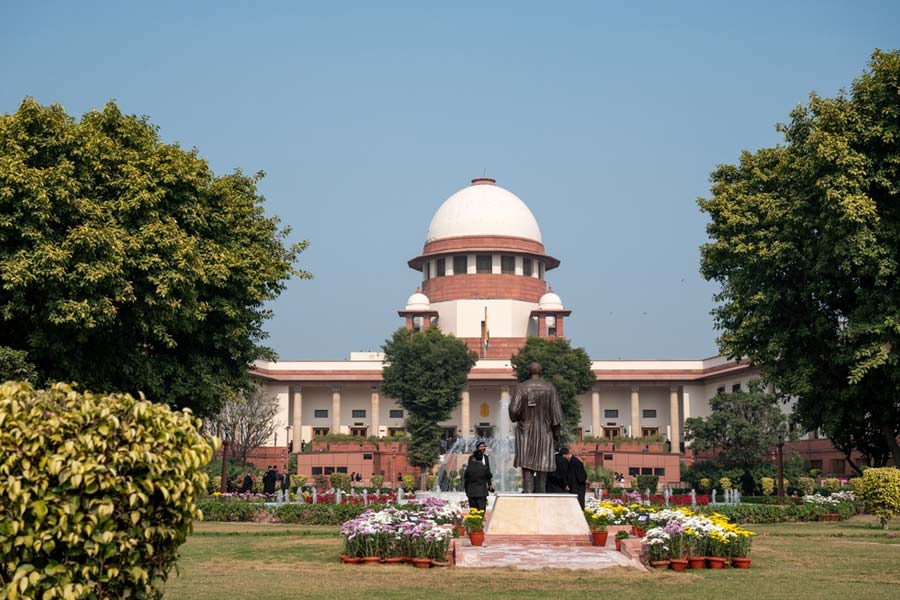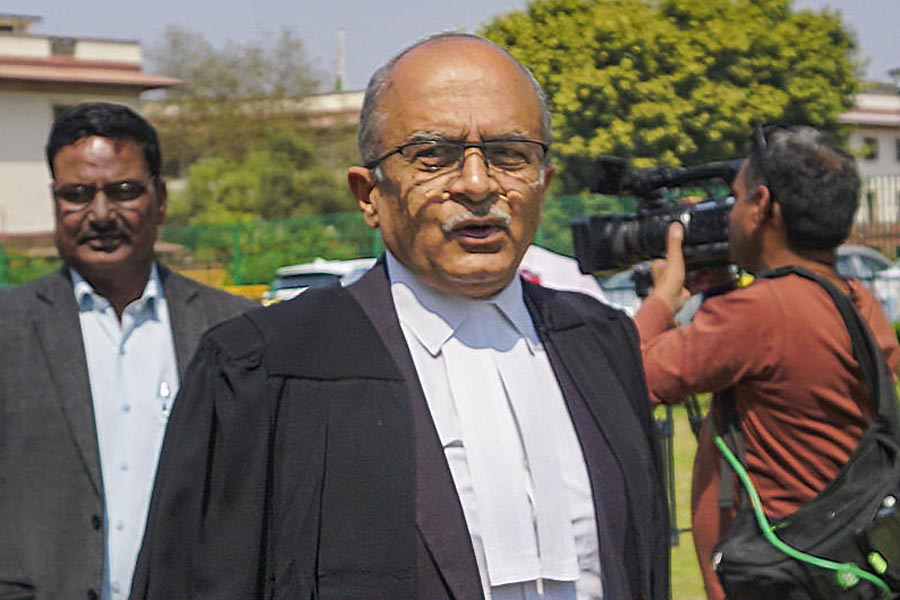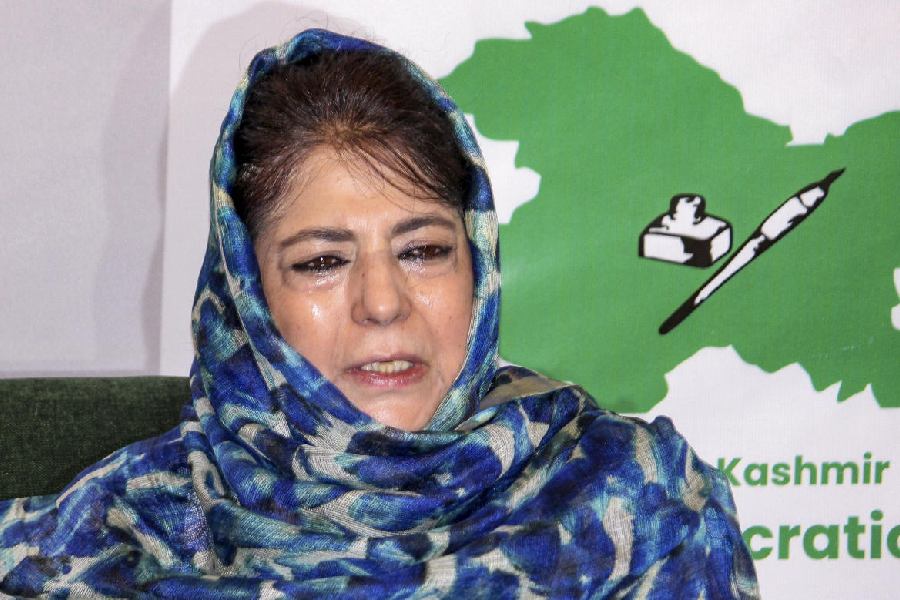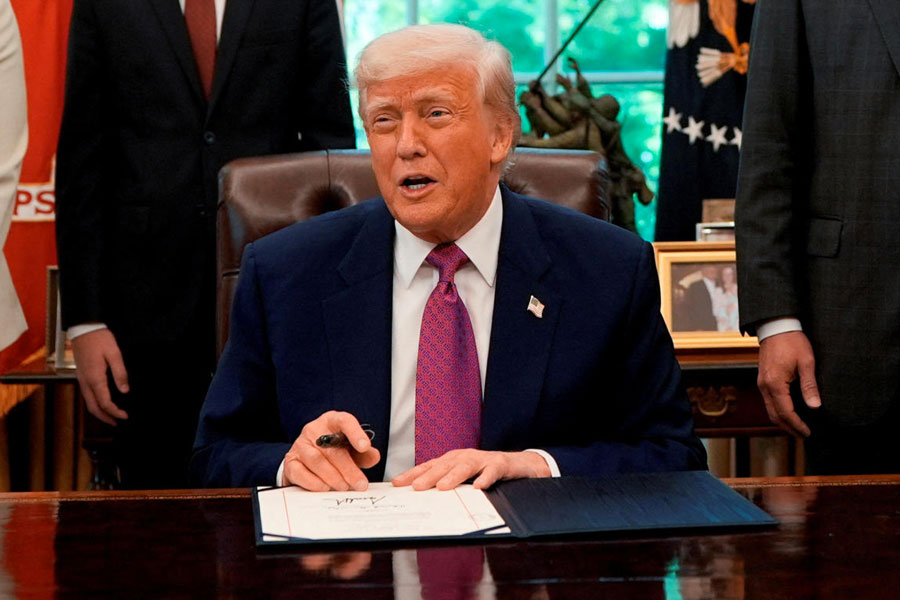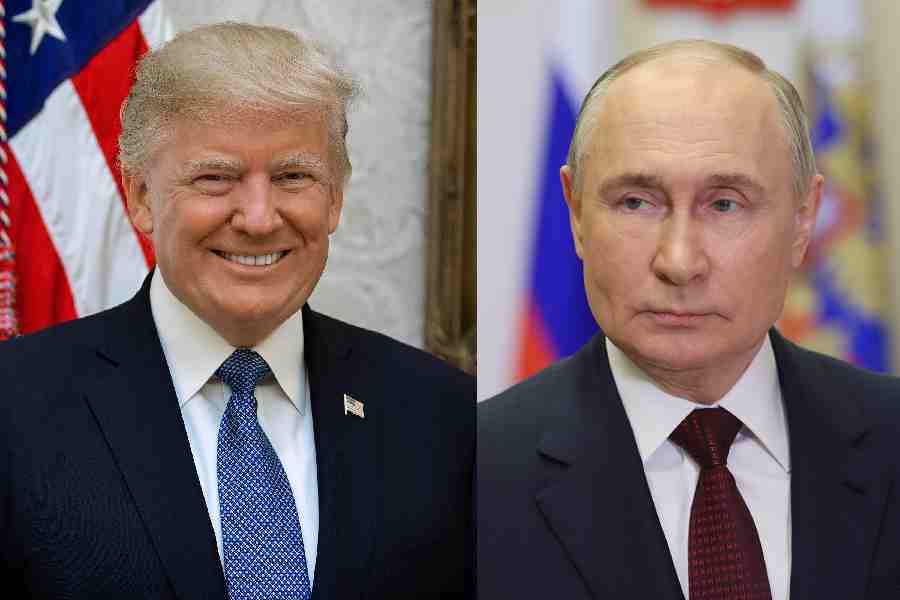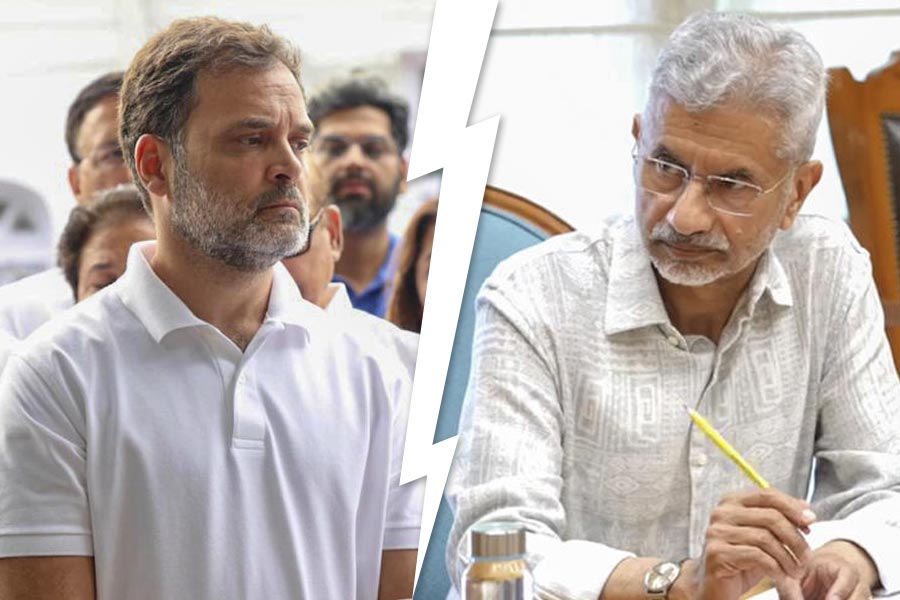 |
| A visitor pores over exhibits at the numismatic show. Picture by Sanjoy Chattopadhyaya |
Those who think the Euro is a mighty step forward in making money cross borders would do well to take a trip to Indian Mirror Street, off Lenin Sarani. At Kumar Singh Hall, amid many other priceless pieces of metal, is the Larin. These fish hook-like objects, which owe their name to Lar, in the Persian Gulf, where it was originally struck, were legal tender in many countries in the Indian Ocean in the late 16th Century.
?They were shaped like this to enable sea merchants to clip them to the waistband if they got shipwrecked,? explained Debashish Paul, secretary of Numismatic Society of Calcutta.
The Society is hosting an exhibition of coins and currency notes till Monday. ?At 21, we are the second oldest in India after the parent body, Numismatic Society of India, established 90 years ago,? Paul offered.
One of the notable collections is that of S.K. Bose, tracing the evolution of the Bengali script from Brahmi through coin inscriptions. The journey starts from fourth century BC in Chandraketugarh (North 24-Parganas) and ends in Bangladesh.
On view is a gold coin of Sasanka (seventh century AD) in Brahmi. ?The Bengali script was not restricted to currency of undivided Bengal. Arakan coins had Bengali on them, as had coins from Manipur and Jayantipur. Some George V pies and siccas also had Bengali on them,? said Bose, pointing to the particular exhibits.
Ujjwal Saha?s Kushan coins cover a 4,000-km stretch from Deccan to central Asia. ?That was in the heydays of the dynasty. Kedar, the last ruler, had barely a few km near the Yamuna,? he said. The R&D employee of a pharmaceutical company has also brought coins of the Gupta age, right from Samudragupta?s gold. ?It has the king playing a lyre, seen in textbooks,? he showed. Coins are a pointer to a region?s economy. The currency of Chandragupta III, the last in the line, pales in comparison to Samudragupta?s eight-gm gold, betraying the former?s debased state.
Odd-shaped coins comprise Seema Paul?s collection. ?Look at those fukka dams of Nepal. They were called so as they were light enough to fly if blown,? her husband Debashish explained. There are also the saddle-shaped Lannatai of north Siam, dumble coins (two coins left connected during casting) and bullet money of Siam. ?The oldest coins are all in silver as gold, perhaps, was too plentiful to be of value,? he added. Paper coins of Bundi (in Rajasthan) and cowries (shells) round up the exotic collection.
Paul?s own collection features a ruler on the throne for just a day. ?Muslim coronation rituals included the striking of a sikka. So whoever was crowned immediately had a coin to his name.?
Anshuman Roy has brought weights of ancient Burma which also did for monetary transactions. These weights, in various measures, come in shapes of maneless lions, cocks, tortoises and elephants. The first silver coin of standardised weight issued by an Indian ruler ? Kuninda of first century BC ? also features in an adjacent cabinet.
S.K. Lahoti has added variety to the show by adding stamps and autographs to commemorative coins of national leaders like Subhas Bose, Mahatma Gandhi, BR Ambedkar and Sri Aurobindo. ?This is the Tribeni of hobbies,? he smiled.


